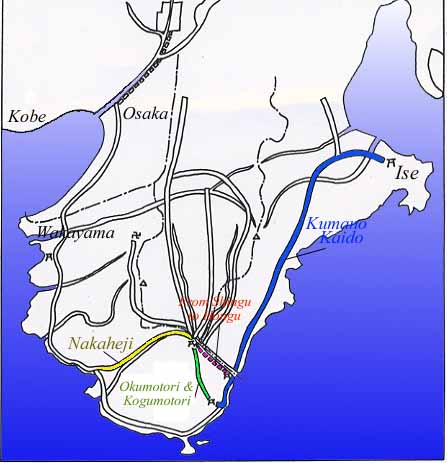
Please click the title of the map
Healing - Experience - Old road

Please click the title of the map
Pilgrimages to Kumano began during the Heian period (around 800 AD) and became so popular at one time as to be dubbed the 'ants pilgrimage" because of the constant flow of pilgrims into the region. Along the pilgrimage route known as the Kumano Kodo (ancient path) people of all ranks and background from the ruling nobility to the common man or woman of the times could be found seeking entrance into the 'Land of Rebirth'. For many it was not their first visit, for quite often they returned again and again to bathe in the healing atmosphere of the region or to pay thanks to the Kumano Deity. There is a historical record which mentions that the Emperors Goshirakawa and Gotoba came approximately thirty times each. Coming from Kyoto these emperors faced a 20-30 day return journey on foot over rugged terrain, through a region famous for its annual rainfall. To endure such hardship so many times indicates how important Kumano was in the eyes of these emperors and the many other pilgrims who made the journey. Coming from all over Japan, pilgrims traveled by three main routes: the Iseji Route, which passes through Ise; the Oheji Route, which follows the coastline from Kyoto; and the Nakaheji Route which goes through the mountains. Among these routes, the Nakaheji route was the most traveled, and along this route you can find numerous small shrines which are known as the 'Kumano Ninety-Nine Shrines', all of which are branches of the Kumano Gongen Grand Shrine system.